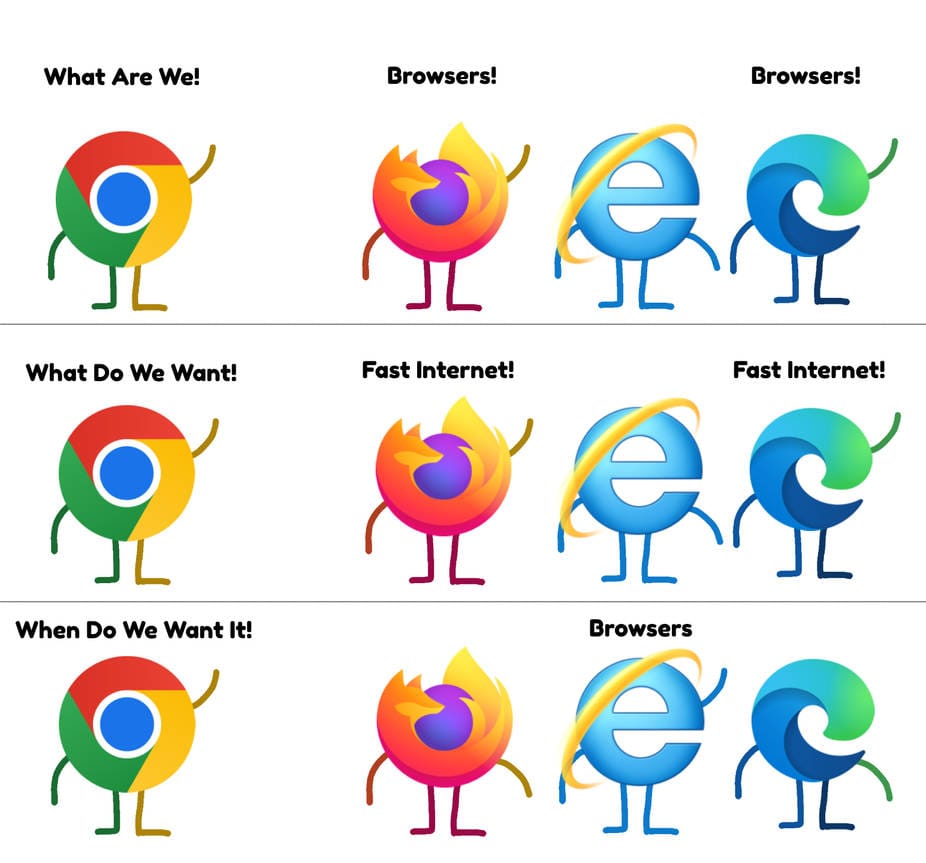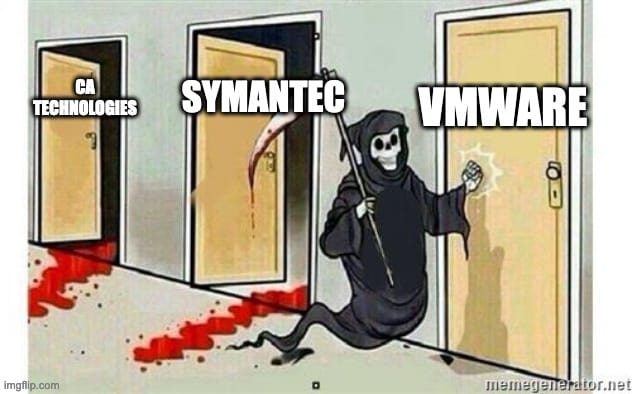Please stop planting only corn

If you’ve ever watched a nature documentary (one of those where David Attenborough quietly whispers the doom of an entire species) you know monocultures are bad. Whether it’s a single type of crop vulnerable to a single parasite, or a forest wiped out by one dumb fungus, nature hates monoculture. Well, guess what? So does your digital infrastructure.
Let’s be honest: we love monocultures in IT. They’re neat. They’re predictable. They make dashboards look tidy and vendors sleep well at night. But just like in nature, digital monocultures come at a cost—and when the bill arrives, it’s usually... spectacular.
Remember Internet Explorer?
Ah, the good old days—when web developers would lovingly code their site, only to spend another week adding bizarre hacks just to make it work in Internet Explorer 6. Why? Because IE had won. Total domination. Microsoft ruled the web, and standards? Standards were whatever Redmond said they were that week.
Then came Firefox, and later Chrome. Suddenly, the monopoly was challenged. The web started to move again. Real standards, competition, innovation! It’s almost like having different browsers pushing each other forward was a good thing.
Who would have thought?

VMware & Broadcom
Fast forward to enterprise IT, where for nearly two decades, VMware wore the crown. It became the platform. Not because it was always the best, but because everyone else was using it. Your backup solution? Only certified on VMware. Your monitoring tools? VMware only. Your sysadmin? VMware certified.
And then... Broadcom happened.
The king didn’t just fall. It sold the kingdom to Broadcom and started charging villagers rent to walk through their own fields.
Suddenly, that "safe" bet wasn’t so safe anymore. Entire ecosystems got whiplash. If you’ve ever watched an elephant panic, you know what it’s like to see a Fortune 500 company trying to exit VMware in six months.
And the worst part? Everyone knew monocultures were risky. They just hoped it wouldn't blow up on their watch.

Even Open Source isn’t immune
“Oh but Olivier,” you might say, “open source is different.” Sure. On paper. In practice? We love our open source hammers, and we treat every problem like a nail.
Linux is amazing. But it’s not the answer to everything. There are places where FreeBSD shines. Places where a small, secure, certifiable OS is a better fit. And then there’s virtualization.
I’m biased (spoiler: I created XCP-ng and Xen Orchestra), but Xen’s design as a microkernel hypervisor brings real advantages. Isolation. Security. Predictable latency. Stuff that’s hard to guarantee with a monolithic kernel like Linux. And yet, the large part of the world seems to have gone full KVM, mostly because—well, everyone else did.
Again: monoculture.
And then people wonder why it’s so hard to get a specific fix upstream, or why latency-sensitive workloads suffer, or why their supposedly “modular” stack depends on twenty unrelated daemons all written in Go by different companies.

The price you pay (later)
Here’s the thing: monoculture feels cheap. One tool to learn. One system to manage. One vendor to deal with.
But you’re trading short-term convenience for long-term risk.
First, the tool might just not be the right fit. That’s the gentle version. Worst case? It introduces vulnerabilities, performance bottlenecks, or compliance nightmares you only discover after going to production. Too late!
Second, putting all your digital eggs in one basket is asking for disruption. Company gets acquired? Project gets killed? Lead dev wins the lottery and disappears into the Andes? You’re toast.
And let’s not forget the elephant in the (situation) room: geopolitics. When most of your digital stack depends on vendors tied to a single country—especially one as... let’s say dynamically governed as the United States—you’re exposed to decisions completely outside your control. Export bans, compliance shifts, sudden embargoes—you name it. None of it has anything to do with your business, but you’re the one who pays the price. Betting your entire infrastructure on a single jurisdiction isn’t just risky—it’s borderline reckless today.
Sourcing your digital stack like an industrialist sources raw materials isn’t overkill. It’s called being smart. Redundancy isn’t waste—it’s insurance. Try explaining that to someone who went all-in on VMware last year.
And yes, using multiple tools means more knowledge. But you don’t need to be a Jedi master of each one. A working knowledge is often enough to save yourself from disaster. It’s like knowing how to use a fire extinguisher: you don’t need to become a firefighter.
The Cult of the cargo
I’ve been around. Fifteen years in the field, the last ten spent talking to thousands of companies, and (somehow) deciding to start a new virtualization platform in 2018, the least sexy year to do so.
In that time, I’ve seen every trend pitched as the solution to all your problems:
- KVM was going to kill Xen (thanks, Red Hat PR machine).
- OpenStack was the universal cloud.
- Containers would kill VMs.
- Public cloud would solve all your IT pain.
- Then Kubernetes would solve public cloud issues
- Then... I lost track.
Each trend comes with its own choir of enthusiastic fans, blog posts, and enterprise PowerPoint decks. Most of the time, companies jump in not because it fits their needs, but because everyone else is doing it.
That’s not strategy. That’s fashion.
And yes, I was tempted to follow the trend too. When we thought about forking XenServer, we hesitated. Was it worth it? Was it too late? And yet, our Kickstarter blew up. Real companies told us: we need this. Not because it was trendy, but because it solved a real problem. That’s the difference.

Digital biodiversity: a hard but worthy path
Bringing diversity into your digital ecosystem isn’t easy. It means evaluating tools, maintaining minimal knowledge across multiple solutions, and sometimes swimming against the current.
But long-term? It’s worth it. Every. Single. Time.
It reduces dependency. It increases resilience. It gives you leverage, flexibility, and room to maneuver. And in times of crisis—when the vendor locks you out, or the platform collapses, or the licensing changes overnight—you’ll be glad you have an alternative.
And if you think challenging monoculture is a lost cause—think again. Look at Valve.
Back when Microsoft had a firm grip on the PC ecosystem and its app store, Valve saw the writing on the wall. Total platform lock-in was looming, and they weren’t going to bet their future on a single gatekeeper. So they did something bold: they invested in making their games work on Linux. Thanks to Proton (and hats off to Pierre-Loup for championing it internally), they made real progress in breaking free.
Fast forward a few years, and they didn’t just survive outside the monoculture—they built the Steam Deck, a wildly popular handheld gaming console... running Linux. Yes, Linux! In this story, Linux was the perfect weapon against the monoculture, proving I hold no grudge—I use it every day.
Valve didn’t wait for disaster. They acted early, took the hit, did the hard work—and now they control their platform, their users, their destiny.

It's up to you
If you’re responsible for your company’s IT, you don’t need to be an expert in every tool. But you do need to think critically about your choices. Ask the hard questions. Look beyond the trend. Consider the consequences—not just today, but five years from now.
Nature figured this out a while ago. Maybe it’s time we catch up.

Member discussion